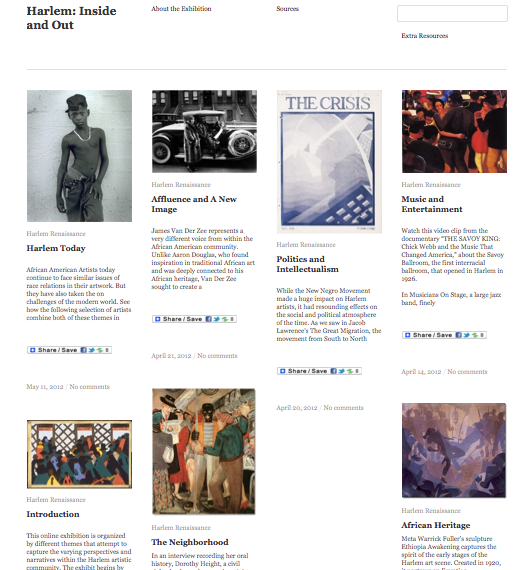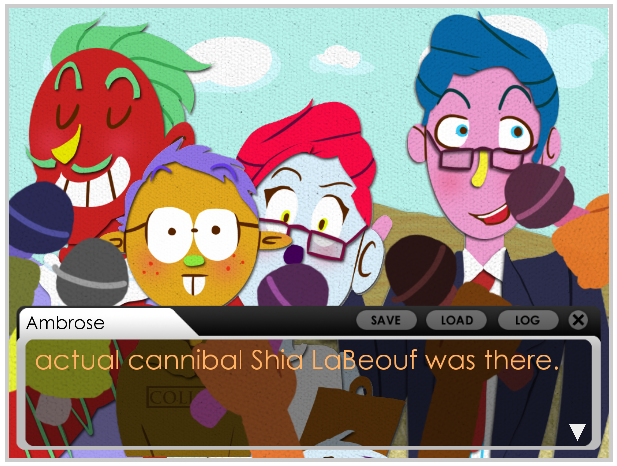 Harlem: Inside and Out is an online exhibition, in the form of a blog, about the Harlem Renaissance. The exhibition is organized into seven themes (as shown on the right) that aim to capture different facets of the African American experience in Harlem during the 1920’s. There is also a page about the exhibition and pages for my sources and suggested readings.
Harlem: Inside and Out is an online exhibition, in the form of a blog, about the Harlem Renaissance. The exhibition is organized into seven themes (as shown on the right) that aim to capture different facets of the African American experience in Harlem during the 1920’s. There is also a page about the exhibition and pages for my sources and suggested readings.
Primarily I wanted to use my final project to test my own bias. As we have talked at length in this course about issues of indigenous and community archaeologies, I wanted to examine how aware I was of my own biases and how difficult it really is to incorporate minority narratives and oral histories in a museum exhibition in order to create a more accurate portrayal the African American community. As it was not feasible for this to be a collaborative project, and we worked with so many forms of new media in our workshops each week, I decided to create a very interactive exhibition in order to gain that sense of multivocality and multiple perspectives and minimize the influence of my own stereotypes. I thus have used videos, sound clips, interviews, excerpts from Harlem Renaissance writers, scholarly perspectives, and links to interactive learning tools and other online exhibitions.
I also wanted to get people thinking as they go through this exhibition, and have therefore posed numerous questions throughout the exhibit that ask viewers to compare what they read or hear in varying primary sources to the works of art themselves, and to relate different artists or black and white interpretations of a subject matter. The goal is for viewers to comment with their thoughts and generate an online discussion that gets people to think about this time period in a new way and recognize their own stereotypes as they open themselves to new, non-white narratives. Enjoy!


